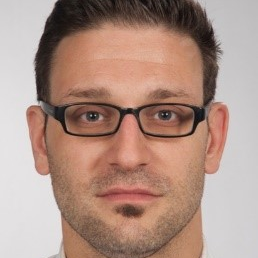Preprint
Article
Surface Characteristics of Aesthetic Nickel-titanium and Beta-titanium Orthodontic Archwires Produced by Plasma Electrolytic Oxidation (PEO) - Primary Results
Altmetrics
Downloads
291
Views
350
Comments
0
A peer-reviewed article of this preprint also exists.
This version is not peer-reviewed
Submitted:
12 April 2019
Posted:
15 April 2019
You are already at the latest version
Alerts
Abstract
Background/Aim: There is continuing interest in engineering esthetic labial archwires. The aim of this study was to coat nickel-titanium (NiTi) and beta-titanium (β-Ti), also known as titanium molybdenum (TMA), archwires by plasma electrolytic oxidation (PEO) and to analyze the characteristics of the PEO-surfaces. Materials and Methods: PEO-coatings were generated on 0.014-inch NiTi and 0.19x0.25-inch β-Ti archwires. The surfaces were analyzed by scanning electron microscopy and stereomicroscopy. Cytocombability testing was performed with ceramized and untreated samples according to EN ISO 10993-5 in XTT-, BrdU- and LDH-assays. The direct cell impact was analyzed using LIVE-/DEAD-staining. In addition, the archwires were inserted in an orthodontic model and photographs were taken before and after insertion. Results: The PEO coatings were 15 to 20 µm thick and esthetically pleasing. The cytocompatibility analysis revealed good cytocompatibility results for both ceramized NiTi and β-Ti archwires. In the direct cell tests, the ceramized samples showed improved compatibility as compared to those of uncoated samples. However, bending of the archwires resulted in loss of the PEO-surfaces. Nevertheless, it was possible to insert the β-Ti PEO-coated archwire in an orthodontic model without loss of the PEO-ceramic. Conclusion: PEO is a promising technique for the generation of esthetic orthodontic archwires. Since the PEO-coating does not resist bending, its clinical use seems to be limited so far to orthodontic techniques using straight or pre-bended archwires.
Keywords:
Subject: Medicine and Pharmacology - Dentistry and Oral Surgery
Copyright: This open access article is published under a Creative Commons CC BY 4.0 license, which permit the free download, distribution, and reuse, provided that the author and preprint are cited in any reuse.
MDPI Initiatives
Important Links
© 2024 MDPI (Basel, Switzerland) unless otherwise stated






